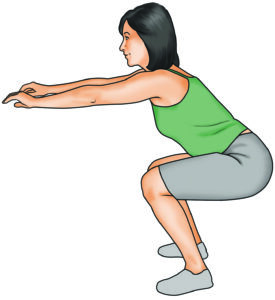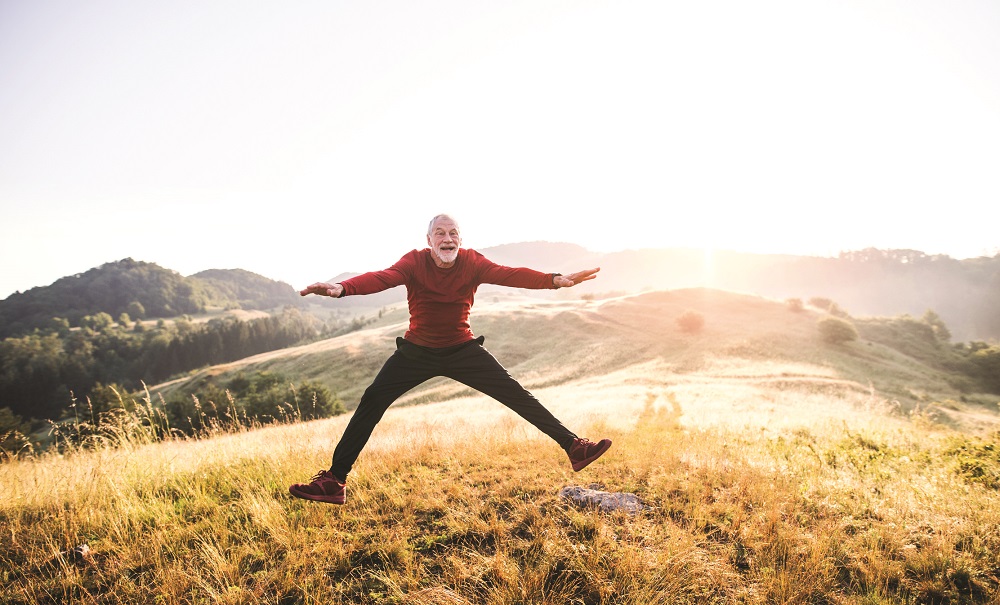Not as mobile as you used to be? Sore backs, stiff joints and decreased mobility often have an astonishingly simple solution, says physical therapy specialist Dr. Kelly Starrett.
Here are six postures, positions and very simple activities that can help you maintain mobility and decrease muscle and joint pain as you get older…
Sit on the floor sometimes. You can’t avoid sitting in chairs in the modern world, but it’s far from ideal for the human body. The pelvis, hip joints and femurs (thigh bones) don’t provide sufficient stability to the back when you are seated in a chair, so the muscles in the back and upper legs have to pitch in. Over time that can lead to back and/or leg pain.
Better option: Sitting on the floor. That arranges the body in a much better position. American adults often find it uncomfortable, but that’s just because they’re not used to it. The body is designed for floor sitting—humans sat on the ground for millennia, and in many parts of the world, they still do. A professor at University of California, Berkeley theorized that habitually sitting on the floor might be one reason why people in China are 80% to 90% less likely than Westerners to experience arthritic hip pain.
Daily floor sitting also forces you to get up from the floor, a skill that’s crucial as we age. An inability to stand up following a fall often is what precipitates a move to a nursing home. A 2014 study by researchers at Brazil’s Gama Filho University even found that an inability to get up and down off the floor without assistance was linked with substantially increased risk for death.
Strategy: Sit on the floor for 30 minutes each day. Cross-legged sitting is particularly helpful—it rotates the hips to their “end range,” which helps keep them flexible and functional. But feel free to shift to other floor-sitting positions as needed to remain relatively comfortable—with both legs straight out…one leg out/one knee bent…or legs tucked under, angled to one side. If 30 minutes on the floor in one stretch is too much for you, start with less than 30 minutes and work your way up to it or break it up into shorter segments. If you’re concerned about your ability to stand up after getting down onto the floor: Sit near something stable that you can grab to help lift yourself up.
Squat. Getting into a deep squat requires multiple joints—ankles, knees and hips—to flex to their full normal end range, which makes this an excellent way to maintain these joints’ mobility. Habitual squatting can clear up lower-back pain, too—developing full “hip flexion” reduces the odds that you will bend excessively with your lumbar spine, which can cause back pain. Squatting even can improve balance and reduce the odds of falls—when the ankle has its full range of motion, the body becomes better at walking on uneven ground. Unfortunately, much like sitting on the floor, squatting is a position that American adults rarely use.

Strategy: Strive to spend at least three minutes each day in a squatting position—but don’t rush into a full squat if you haven’t used this position very much recently. Start by squatting down onto and then up from a chair. Here’s how: Hold your arms out straight in front of you for balance. Don’t use them to grip the chair. Over time, increase the number of these “chair squats” each day until they become easier. Be sure to hold something stable for balance, such as a kitchen counter. Remain in the squat as long as you can…up to three minutes. If you can’t lift yourself back up from a squatting position with leg power alone, drop to a knee and raise yourself back up some other way. The ultimate goal is to squat so deeply that your feet are flat on the floor and your hips are lower than your knees.
Extend your hips. Most people rarely, if ever, extend their legs significantly behind their bodies. This happens when you step up onto a high surface, run up a hill or step down from a high step, for example. As a result, the hips are the major joints that are least likely to have full mobility, and that diminished mobility can have far-reaching physical consequences. Poor hip mobility can prevent you from standing up straight, which can lead to back and knee pain and even difficulty breathing.

Strategy: Hold a “lunge” position for 30 seconds. Think of a lunge as pausing in the middle of an exaggerated walking step—one leg and foot forward…the other farther back than it would be in a normal step. Squeeze your glutes—those are your butt muscles—as tightly as you can while holding this position. Repeat with your other leg. Work your way up to five sets of 30 seconds apiece.
Bounce. Fitness trainers in the Eastern Bloc used to have a saying—when you stop jumping, you start dying. Jumping is a wonderful way to improve balance and strengthen the crucial but often-overlooked muscles and joints of the feet and ankles. It revives a sense of physical “springiness” that many people haven’t felt since their youth, is great cardiovascular exercise and is an effective way to burn calories. The main downside of jumping is that there’s some danger of falling, but if that’s a concern, there’s a simple solution—if you can’t safely jump, bounce.
Strategy: Hold onto something stable, such as a kitchen counter. Raise up on your toes, and bounce up and down rapidly for 10 to 20 seconds, without your toes ever leaving the ground. Then rest and repeat—try to do three to five sets per day.
Extend your arms. Our arms spend virtually all of the time by our sides or out in front of us. Just as failing to use our hips’ full range of movement can lead to lower-back and knee pain and loss of lower-body mobility, failing to use our shoulders’ full range of movement can lead to upper-back pain, neck pain and “frozen shoulders.”

Strategy: Extend your arms three to five times per day, perhaps by touching the moulding above a doorway…hanging from a pull-up bar…getting into the yoga position downward dog…or simply reaching skyward. Take at least five very deep breaths each time your arms are in this position.
Walk. Walking benefits body mechanics, balance and foot strength. Taking walks also reduces stress and improves sleep quality—two things that help relieve physical pain. And if that isn’t enough reason to walk, consider this—walking 8,000 steps a day rather than just 3,000 is associated with a 51% lower risk for death, according to a 2020 study by a team at organizations including the National Cancer Institute.
Strategy: Walk at least 8,000 steps per day. The typical American walks only 3,000 to 4,000 steps each day.


